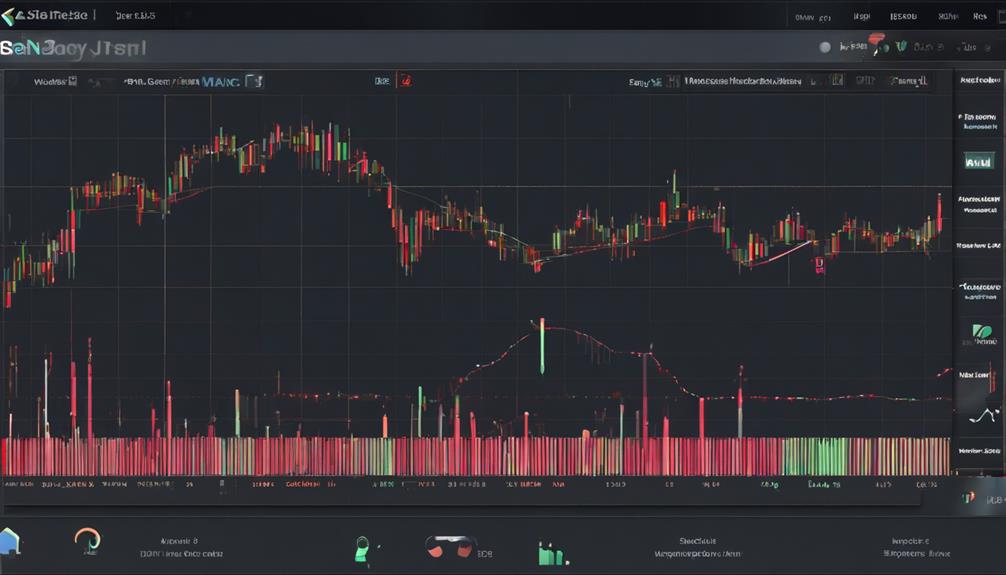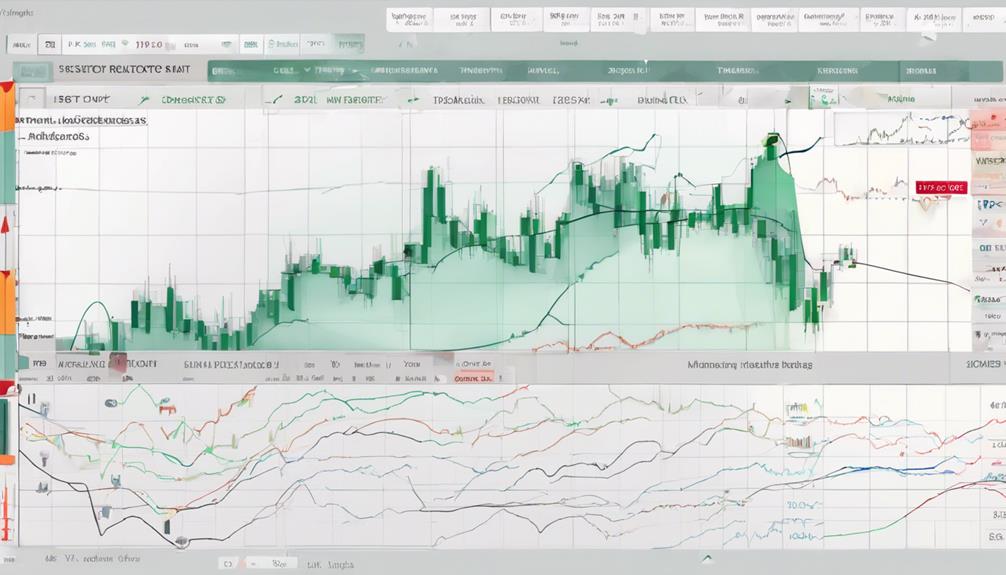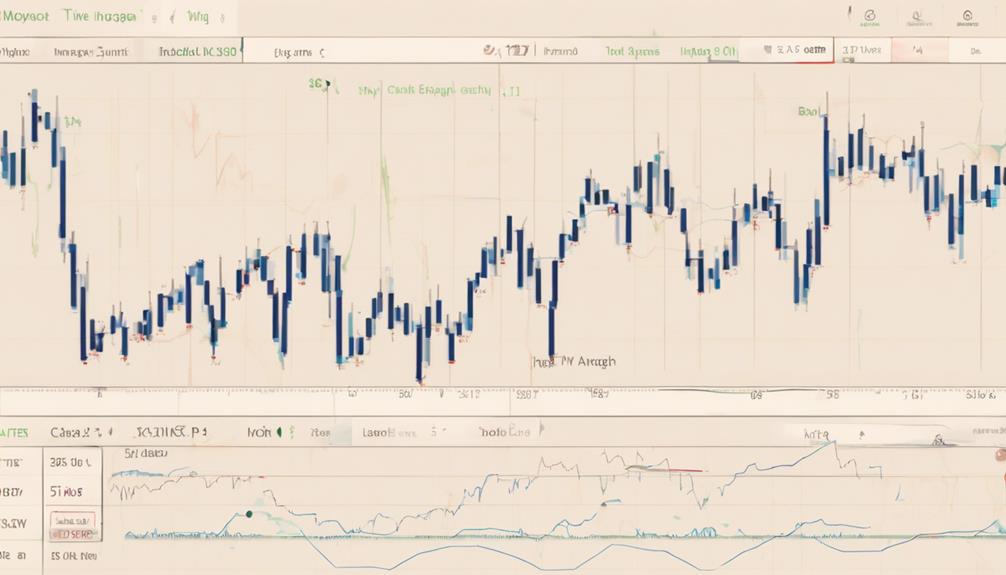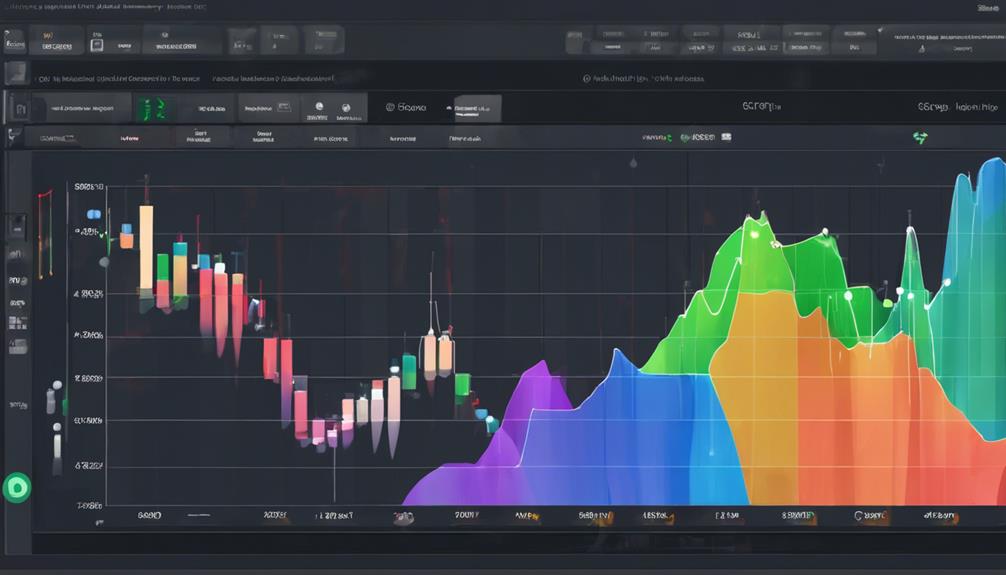Curious about how technical indicators can enhance your trading strategy? Understanding the basics is pivotal in navigating the complex world of financial markets.
From identifying trends to predicting potential price movements, these tools offer valuable insights. But how do you know which indicators to trust in a sea of options?
Unraveling this mystery can lead to more informed decision-making and potentially improved outcomes in your trading endeavors.
Types of Technical Indicators
Analyzing technical indicators involves categorizing them into distinct types based on their functions and characteristics.
When considering price movements on a chart for trading purposes, Exponential Moving Averages (EMAs) play a crucial role. EMAs help traders identify trends efficiently by giving more weight to recent prices.
Support Levels and Head and Shoulders Chart patterns are also essential technical indicators that traders use to predict potential price reversals.
Additionally, the Stochastic Oscillator is widely used to determine overbought and oversold conditions in the market, assisting traders in making informed decisions.
Common Technical Indicators

Moving averages serve as a foundational technical indicator for identifying trends and potential support or resistance levels in price movement.
- MACD: A powerful indicator that assesses the momentum of a stock's price movement, aiding in trend identification.
- RSI: This momentum oscillator determines if a stock is overbought or oversold, offering insights for potential reversals.
- Bollinger Bands: These bands around a moving average help visualize volatility and potential price ranges, showing standard deviations.
These indicators play crucial roles in analyzing trends, support, resistance, momentum, and volatility in the financial markets. Incorporating them into your technical analysis can enhance your understanding of market dynamics and assist in making informed trading decisions.
Applying Technical Indicators in Trading

To effectively apply technical indicators in trading, understanding their significance in identifying market trends and potential price movements is essential. Common technical indicators like moving averages (MAs), Relative Strength Index (RSI), Exponential Moving Average (EMA), and Moving Average Convergence Divergence (MACD) offer valuable insights into price action, support and resistance levels, and overbought or oversold conditions in stocks.
Keeping Indicators Simple

When simplifying technical indicators for trading purposes, it's crucial to start with fundamental indicators like moving averages and RSI to build a solid understanding of their functionalities.
- Start with Moving Averages and RSI to grasp the basics.
- Avoid overwhelming yourself by using too many indicators at once.
- Focus on understanding the simple interpretations and signals of each indicator.
Customizing Indicators to Your Style

Start by tailoring your technical indicators to match your preferred trading style, whether you engage in day trading, swing trading, or opt for long-term investing. Customize indicator parameters such as time periods, smoothing factors, and thresholds to align with your risk tolerance and market outlook.
Make adjustments to indicator settings that suit the securities you trade, whether they're highly liquid stocks, volatile assets, or specific market sectors. Experiment with different indicator combinations to create a personalized trading strategy that reflects your market analysis preferences.
Continuously refine and optimize your indicator settings based on real-time market feedback and performance to enhance your trading outcomes. This customization will help you develop a robust trading approach that complements your individual style and objectives.
Can I Learn the Basics of Technical Indicators from the Comprehensive Guide?
Yes, you can learn the basics of mastering technical indicators stepbystep from the comprehensive guide. It covers everything from simple moving averages to complex oscillators, providing a clear understanding of how to use these tools in your trading strategy.
Frequently Asked Questions
What Are the Basics of Technical Indicators?
To understand the basics of technical indicators, analyze market data through visual tools. Derived from price, time, and volume data, these indicators help interpret and predict price movements. Factors like velocity and moving averages aid in this analysis.
How to Learn Technical Analysis for Beginners?
To learn technical analysis for beginners, start by grasping key concepts like trend identification and support/resistance levels. Familiarize yourself with common indicators like moving averages, RSI, and MACD. Practice analyzing stock charts to observe trends and price movements.
What Is the Best Indicator for Beginners?
When starting out, the Simple Moving Average (SMA) is your best bet. It smooths out price fluctuations, confirms trends, and offers entry/exit signals through crossovers. Mastering SMA lays a solid foundation for technical analysis.
What Is the First Step Guide to Technical Analysis?
Start by understanding the fundamentals of technical analysis. Learn to interpret indicators, identify trends, and analyze support and resistance levels. Practice with real-time scenarios using online resources. This foundational knowledge will guide your trading decisions.
Conclusion
Now that you have learned the basics of technical indicators, you're on the right track to becoming a successful trader. By applying these tools effectively, you can make informed decisions and enhance your trading strategy.
Keep exploring different indicators, testing them out in real market situations, and fine-tuning your approach. The world of technical analysis is vast and exciting, so stay curious and keep pushing your boundaries to achieve your trading goals.
Get ready to see your skills and profits soar!
